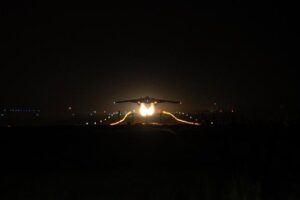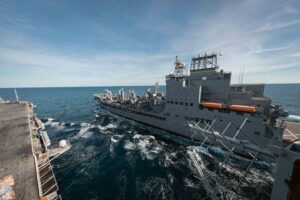U.S. Army Paves the Way for New Multi-Domain Commands in Pacific
The U.S. Army is taking significant steps to bolster its strategic capabilities in the Pacific region. As part of its transformation initiative, the Army plans to establish two new Multi-Domain Commands to oversee its Multi-Domain Task Force (MDTF) units. This move is aimed at countering China’s assertive maneuvers in the area, according to Gen. Ronald Clark, the commander of U.S. Army Pacific.
According to a recent Army execution order, four Multi-Domain Commands are to be established, with two specifically focused on the Pacific: Multi-Domain Command — Pacific and Multi-Domain Command — Japan. The other two, Multi-Domain Command — Europe and Multi-Domain Command — Army, are also underway.
“The Army is working on sizing the force for the commands ‘in a way that’s different,'” Clark noted in an interview. The Multi-Domain Commands will ensure proper command authority at the right level, especially as MDTF capabilities in the Pacific continue to expand.
The Army’s first MDTF, which began as an experimental unit, has since been operationalized and will ultimately be joined by four more. The initial unit was set up at Joint Base Lewis-McChord in Washington state around 2018. Participation in U.S. INDOPACOM theater exercises has been pivotal in shaping the Army’s Multi-Domain Operations concept, now part of its doctrine.
Following the establishment of the second MDTF in Europe in 2021 and the third in Hawaii in 2022, a fourth will focus on the Pacific. The fifth, stationed at Fort Bragg, North Carolina, will be deployable on short notice. All MDTFs are expected to be fully operational by 2028.
These MDTFs are designed to operate seamlessly across various domains, including land, air, sea, space, and cyberspace. They are equipped with advanced capabilities such as the Precision Strike Missile, Long-Range Hypersonic Weapon, and Mid-Range Capability Missile. Additionally, they will gather intelligence from multiple domains and facilitate information sharing within the joint force for effective targeting.
The presence of MDTF units in the Pacific has been recognized for its deterrent effect. For example, the 1st MDTF’s Mid-Range Capability (MRC) has provoked a strong reaction from China following its deployment to the Philippines during recent U.S. Army exercises.
Exercises and warfighter experimentation have demonstrated the necessity of operationalizing these commands and enhancing command authority for MDTFs, according to Clark. The new commands add to existing resources in the Indo-Pacific and U.S. Army Pacific, bringing additional tasks and funding, as reflected in the Army’s fiscal 2026 budget request.
The 1st and 3rd MDTF will be under the Multi-Domain Command — Pacific, while the 4th MDTF will align with Multi-Domain Command — Japan. The Pacific command will integrate the 7th Infantry Division headquarters with the 1st and 3rd MDTFs, while the Japan command will combine U.S. Army Japan’s headquarters with the 4th MDTF.
“The Multi-Domain Task Force is a theater-level capability,” Clark stated. “It has inherent capabilities… cyber, space, electronic warfare, long-range precisions first, it’s ability to be able to conduct integrated air and missile defense in its own defense and in a point defense kind of way, those capabilities… go beyond an area of joint area of operations.”
At present, MDTFs are led by colonels, but they will now integrate into a two-star command structure, providing the ability to report directly to higher authorities like U.S. Army Pacific. Clark emphasized, “We need to up-gun the level of staff and command.”






